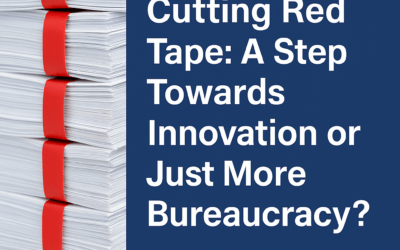It’s a tough world out there for medtech innovators. Getting your product in front of the right people isn’t easy, so it’s important to get your ducks in a row. But how do you do that?
Here, we take a dive into six key elements to success.
✅ Your medtech innovation must be original, and it must address a recognised problem
Do your research. Is there a similar product out there already? Has the associated Intellectual Property already been protected by someone else? What problem are you looking to solve? Have you demonstrated that the problem is seen as valid by more than one healthcare provider? What methods are currently being used to address this problem?
Budgets are tight. There has to be clear value for money and quantifiable results in pursuing your innovation.
✅ Your medtech innovation must be technically possible
A lack of understanding of how the NHS works often leads to ideas that are just not feasible. For example, the NHS is made up of multiple different organisations. Data is not all held in one place, and most systems are not integrated with each other.
To this, we should also add that it must be easily usable and integrated into existing systems, which are integral to existing services and workflow.
For non-digital technology, consider the variety of different people who have to use it, including clinicians and patients; for example, giving a complex and fiddly piece of equipment to an elderly patient with arthritic hands is never going to work. Most surgeons have their own individual techniques, and most NHS providers have their own unique treatment pathways.
Ideally, your innovation should streamline the process. You will undoubtedly meet resistance to change!
✅ Your medtech innovation must be financially viable
How much is your product going to cost to produce? How much can you realistically sell it for?
Gain an understanding of how procurement within the NHS works.
Ask yourself these pertinent questions: How am I going to sell this? Who is my target market? Do I have sufficient financial backing to navigate my way through the likely hurdles – legal, clinical, security regulatory – before I see any return on my investment?
Your device/treatment/service may address a real need, but if those who are going to benefit are only a relatively small amount of the population, or the purchase needs to come from an already overstretched budget, your job is going to be tougher.
The biggest question is, WILL MY PRODUCT BE REIMBURSED? This means understanding how and by whom the product will be paid for. Does this include sign-off by multiple stakeholders (almost always yes), and how long will this take? If your budget doesn’t allow you to wait the time needed for adoption before getting a return on investment, you will go bust.
✅ Your medtech innovation must be clinically validated
Interview relevant stakeholders. What pros and cons do they see? Listen to and act on the feedback.
Where does your innovation sit on the clinical pathway?
Are you sure that you’ve identified a need rather than a ‘nice to have’?
Document your evidence.
✅ Your medtech innovation must be safe and effective
This is more than it not falling apart when someone picks it up. Any new device or product that is used on, in or with people needs to be safe to use (not cause injuries through use, even if not as a direct result of the product itself). Think about what a patient has to do to use the product. Would it mean straining muscles by getting into the correct position to use it effectively, for example? Could it cause other issues?
Effectiveness can only be demonstrated by testing, piloting and trials.
✅ Do you need regulatory approval?
Does your medtech innovation need to be registered as a medical device? Does your product need NICE approval? How will you go about that?
We work with experts to navigate the system, including structuring your development processes to create compliance documentation for regulatory submissions.
Lots to consider!
Through all this, you will need grit and determination, the courage to challenge your own thinking and a flexible mindset. However, great though the challenges are, so are the rewards! If you think you have what it takes, but you’d like someone more experienced by your side, please feel free to contact us. The initial consultation is always without obligation and free of charge.



